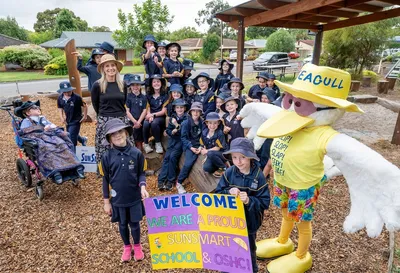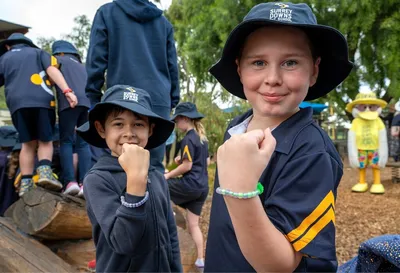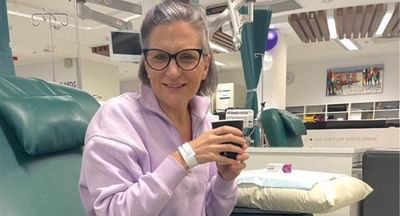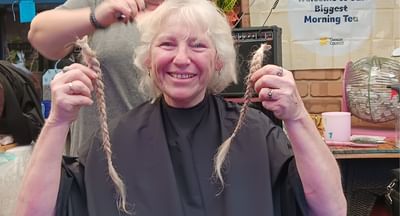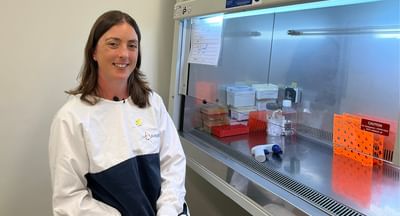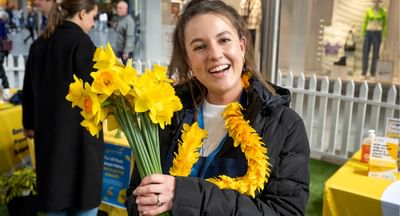Cancer Council’s SunSmart School and Early Childhood Program has been running in South Australia for more than 20 years and with more than 800 South Australian schools, OSHC services and early childhood centres currently recognised as SunSmart.
Surrey Downs Primary School has been developing sun protection behaviours in students since 2006, and at our visit we got to see these SunSmart practices in action! Their sun protection practices involve: ‘No Hat, Play in the Shade’ designated areas, sunscreen available for students to apply before heading outside, students wearing sun protective clothing and hats outdoors, and educators role modelling sun protection.
The Year 3 and 4 students heard from Minister Boyer about the importance of sun protection and had a chance to show us what they’re learning about being SunSmart.
A new study which looked at melanoma incidence rates in those aged 0-39 years across South Australia, Victoria and Queensland, shows melanoma rates are tracking down in all three states. The study, published in Cancer Epidemiology, looked at data over a 20-year period (from 1997-2016).
Cancer Council SA Chief Executive Kerry Rowlands says that the data is promising and shows the positive impact of programs like the SunSmart Schools and Early Childhood Program.
“The earlier children start protecting their skin, the greater their chance of avoiding skin cancer later in life,” Kerry says.
“We know that children’s skin is more sensitive to ultraviolet radiation and a history of sunburns during childhood have been associated with increased melanoma risk. Cancer Council SA’s SunSmart Schools and Early Childhood program helps students to understand the link between UV and skin cancer and ultimately, educates them on how to reduce their future cancer risk.”
Cancer Council’s world leading SunSmart program is dedicated to reducing skin cancer rates and impact through a targeted skin cancer prevention and early detection program. Sun protection activities were first introduced in the 60s when Cancer Council identified the risks of overexposure to UV radiation.
“Cancer Council has a proud history in SunSmart messaging. Many South Australians, particularly those under 40 would be familiar with our call to ‘slip, slop, slap, seek and slide’ to protect their skin and our beloved SunSmart icon Sid the Seagull,” Kerry says.
“We have been committed to the SunSmart cause for decades and are pleased to see a decline in the rate of this deadly cancer, particularly in the under 40s.”
“If we can work together, I’m confident that we can continue to see melanoma rates decline amongst our young people and embed SunSmart practices in future generations.”

